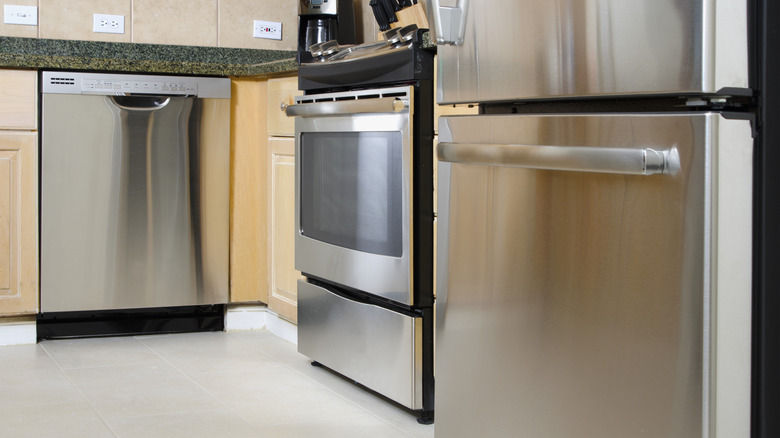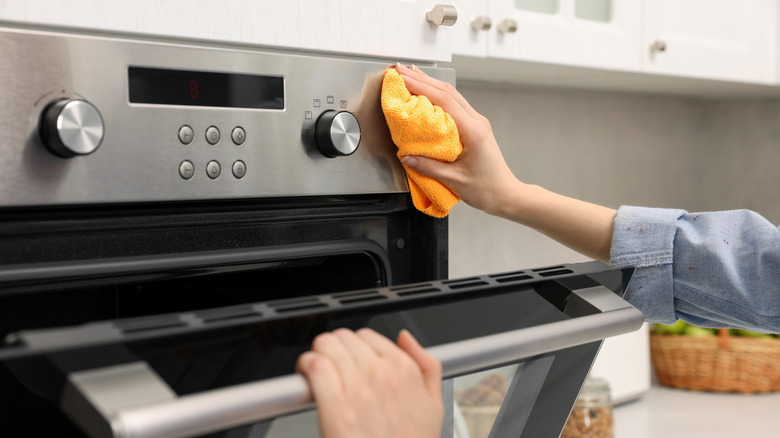The Common Cleaning Item That Makes Stainless Steel Appliances Look Worse
Stainless steel appliances can give any kitchen a contemporary boost with their glossy and shiny appearance. That's not the only benefit, though. Apart from being easy on the eye, stainless steel appliances are also quite sturdy and enduring, meaning they can last for years. However, they do have a weakness: they show signs of every day use easily — from water or grease marks to finger smudges, and the like. Whatever the stain or mark, though, when you're scrubbing away to maintain the shiny, spotless appearance of your steely helpers in the kitchen, there's one item you should never be using: steel wool.
Steel wool is made by intertwining tiny strands of steel together, which makes it abrasive in nature. While this makes it great for battling rust and getting rid of those tough grime spots hidden away in the oven — which you should be cleaning more often than you think — the same can't be said for using it on your stainless steel appliances. In fact, using a steel wool pad to scrub stainless steel can cause lots of tiny scratches to form on it. These nicks can then make your gleaming appliances look dull and worse for wear. More importantly, and aesthetics aside, the scratches also mean that your stainless steel will rust more easily, leading to even more damage in the long run.
How to clean your stainless steel appliances
When it comes to cleaning your stainless steel appliances, there are many workarounds that don't involve using steel wool. One simple alternative is to invest in a dedicated cleaning solution meant for stainless steel appliances. Additionally, another great cleaning product to have on hand for this task is a microfiber cloth, which is gentler than steel wool. Combined, these two items can take care of most everyday dirt and grime, and remove spots from your stainless steel appliances.
If you don't happen to have a stainless steel appliance cleaner on hand, you can also take a DIY route. Simply pour some dish soap into warm water, and use that with your microfiber cloth. A few drops of lemon oil will also make stainless steel sparkle. If you're dealing with tougher rust stains, try treating them with a baking soda and water paste before wiping it off with your cleaning solution. However, keep in mind that, while baking soda is less abrasive than steel wool, it's still considered a mild abrasive. This means that you don't want to use it too often, only when the stains are severe. And, when you do use it, take care not to rub the paste into your appliance too hard; a gentle scrub with your finger is enough.
It's also worth mentioning that stainless steel has a grainy finish, and these grains typically move in one direction. So, when you're cleaning off the stains, it's best to wipe in the same line as the grain. This will prevent any cleaning solution from getting trapped between the grains and making your stainless steel appear dull — instead, keeping all those ovens, fridges, and stovetops shining like they're brand new.

